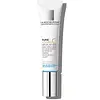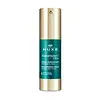What's inside
What's inside
 Key Ingredients
Key Ingredients

 Benefits
Benefits

 Concerns
Concerns

 Ingredients Side-by-side
Ingredients Side-by-side

Water
Skin ConditioningGlycerin
HumectantDimethicone
EmollientButyrospermum Parkii Butter
Skin ConditioningLimnanthes Alba Seed Oil
Skin ConditioningAscorbic Acid
AntioxidantMannose
HumectantButylene Glycol
HumectantParaffinum Liquidum
EmollientAmmonium Polyacryloyldimethyl Taurate
Emulsion StabilisingCetyl Alcohol
EmollientPEG-100 Stearate
Glyceryl Stearate
EmollientPolymethylsilsesquioxane
Potassium Hydroxide
BufferingParaffin
PerfumingSodium Styrene/Ma Copolymer
Emulsion StabilisingCera Microcristallina
Emulsion StabilisingMadecassoside
AntioxidantDimethicone/Vinyl Dimethicone Crosspolymer
Skin ConditioningDimethiconol
EmollientDisodium EDTA
Hydrolyzed Hyaluronic Acid
HumectantCaprylyl Glycol
EmollientAcetyl Dipeptide-1 Cetyl Ester
Skin ConditioningXanthan Gum
EmulsifyingPentaerythrityl Tetra-Di-T-Butyl Hydroxyhydrocinnamate
AntioxidantPhenoxyethanol
PreservativeWater, Glycerin, Dimethicone, Butyrospermum Parkii Butter, Limnanthes Alba Seed Oil, Ascorbic Acid, Mannose, Butylene Glycol, Paraffinum Liquidum, Ammonium Polyacryloyldimethyl Taurate, Cetyl Alcohol, PEG-100 Stearate, Glyceryl Stearate, Polymethylsilsesquioxane, Potassium Hydroxide, Paraffin, Sodium Styrene/Ma Copolymer, Cera Microcristallina, Madecassoside, Dimethicone/Vinyl Dimethicone Crosspolymer, Dimethiconol, Disodium EDTA, Hydrolyzed Hyaluronic Acid, Caprylyl Glycol, Acetyl Dipeptide-1 Cetyl Ester, Xanthan Gum, Pentaerythrityl Tetra-Di-T-Butyl Hydroxyhydrocinnamate, Phenoxyethanol
Water
Skin ConditioningCoco-Caprylate/Caprate
EmollientHelianthus Annuus Seed Oil
EmollientArachidyl Alcohol
EmollientGlycerin
HumectantHydroxyethyl Acrylate/Sodium Acryloyldimethyl Taurate Copolymer
Emulsion StabilisingHydroxyethyl Urea
HumectantBehenyl Alcohol
EmollientTocopherol
AntioxidantParfum
MaskingArachidyl Glucoside
EmulsifyingPhenoxyethanol
PreservativeEthylhexylglycerin
Skin ConditioningAlbizia Julibrissin Bark Extract
MaskingDehydroacetic Acid
PreservativeCaffeine
Skin ConditioningSodium Gluconate
Skin ConditioningSodium Stearoyl Glutamate
CleansingButylene Glycol
HumectantPolysorbate 60
EmulsifyingSorbitan Isostearate
EmulsifyingBougainvillea Glabra Leaf Cell Extract
AntioxidantHyaluronic Acid
HumectantAmmonium Lactate
BufferingSodium Hydroxide
BufferingAlteromonas Ferment Extract
Skin ConditioningTheobroma Cacao Leaf Cell Extract
MaskingUndaria Pinnatifida Extract
Skin ConditioningCrocus Sativus Flower Extract
MaskingBenzyl Alcohol
PerfumingSodium Benzoate
MaskingDarutoside
Skin ConditioningWater, Coco-Caprylate/Caprate, Helianthus Annuus Seed Oil, Arachidyl Alcohol, Glycerin, Hydroxyethyl Acrylate/Sodium Acryloyldimethyl Taurate Copolymer, Hydroxyethyl Urea, Behenyl Alcohol, Tocopherol, Parfum, Arachidyl Glucoside, Phenoxyethanol, Ethylhexylglycerin, Albizia Julibrissin Bark Extract, Dehydroacetic Acid, Caffeine, Sodium Gluconate, Sodium Stearoyl Glutamate, Butylene Glycol, Polysorbate 60, Sorbitan Isostearate, Bougainvillea Glabra Leaf Cell Extract, Hyaluronic Acid, Ammonium Lactate, Sodium Hydroxide, Alteromonas Ferment Extract, Theobroma Cacao Leaf Cell Extract, Undaria Pinnatifida Extract, Crocus Sativus Flower Extract, Benzyl Alcohol, Sodium Benzoate, Darutoside
Ingredients Explained
These ingredients are found in both products.
Ingredients higher up in an ingredient list are typically present in a larger amount.
Butylene Glycol (or BG) is used within cosmetic products for a few different reasons:
Overall, Butylene Glycol is a safe and well-rounded ingredient that works well with other ingredients.
Though this ingredient works well with most skin types, some people with sensitive skin may experience a reaction such as allergic rashes, closed comedones, or itchiness.
Learn more about Butylene GlycolGlycerin is already naturally found in your skin. It helps moisturize and protect your skin.
A study from 2016 found glycerin to be more effective as a humectant than AHAs and hyaluronic acid.
As a humectant, it helps the skin stay hydrated by pulling moisture to your skin. The low molecular weight of glycerin allows it to pull moisture into the deeper layers of your skin.
Hydrated skin improves your skin barrier; Your skin barrier helps protect against irritants and bacteria.
Glycerin has also been found to have antimicrobial and antiviral properties. Due to these properties, glycerin is often used in wound and burn treatments.
In cosmetics, glycerin is usually derived from plants such as soybean or palm. However, it can also be sourced from animals, such as tallow or animal fat.
This ingredient is organic, colorless, odorless, and non-toxic.
Glycerin is the name for this ingredient in American English. British English uses Glycerol/Glycerine.
Learn more about GlycerinPhenoxyethanol is a preservative that has germicide, antimicrobial, and aromatic properties. Studies show that phenoxyethanol can prevent microbial growth. By itself, it has a scent that is similar to that of a rose.
It's often used in formulations along with Caprylyl Glycol to preserve the shelf life of products.
Water. It's the most common cosmetic ingredient of all. You'll usually see it at the top of ingredient lists, meaning that it makes up the largest part of the product.
So why is it so popular? Water most often acts as a solvent - this means that it helps dissolve other ingredients into the formulation.
You'll also recognize water as that liquid we all need to stay alive. If you see this, drink a glass of water. Stay hydrated!
Learn more about Water